Top 10 tips to spot a kingfisher
How can you improve your chances of spotting the kingfisher’s elusive flash of blue and orange?
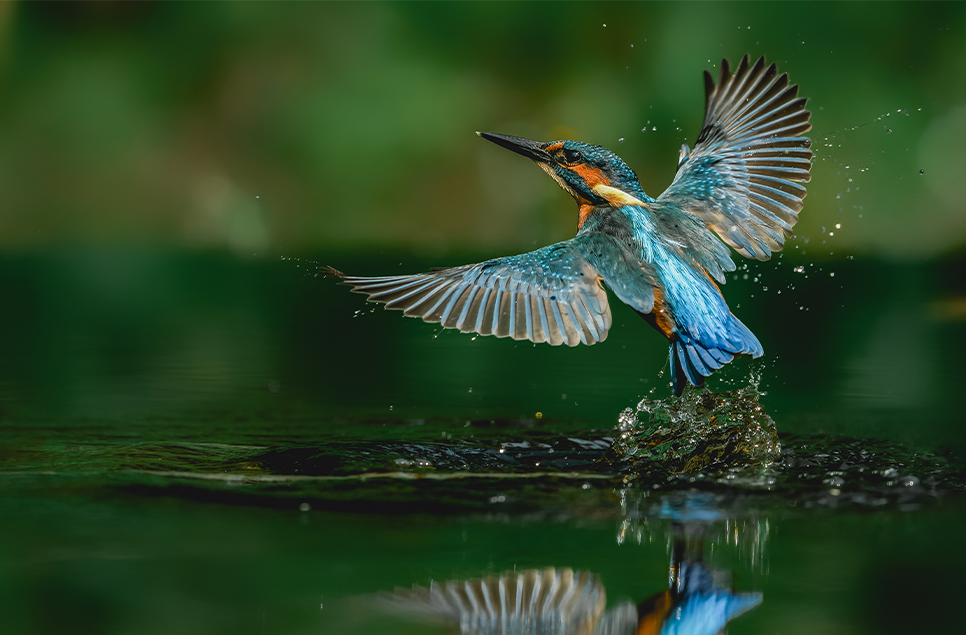
Kingfishers are undoubtedly one of the UK’s most iconic and dazzling waterside birds. No matter how often you see one, the novelty never wears off. But despite their bright colours, they can be surprisingly difficult to spot.
To increase your odds, we’ve pulled together some top tips. So, fingers crossed, next time you’re near a wetland you’ll be rewarded with a glimpse of this vibrant bird.
1. The best things come to those who wait
The first thing you need when trying to spot a kingfisher is patience – and plenty of it. Sometimes it’s down to sheer luck. But more often, success involves a great deal of waiting and hoping.
In fact, because kingfishers are so difficult to spot, they’ve inspired a saying: ‘Only the righteous see the kingfisher’. That said, there are some things you can do to increase your chances of a sighting.
2. Scout out a waterfront hangout
Kingfishers like to hang out near the water’s edge. You can find them on almost any river, canal, lake or gravel pit. Sometimes they’ll even fish at large garden ponds. They especially favour areas where it’s easy for them to spot their next meal. So, look out for places where the water’s clear, slow flowing and shallow.
Kingfishers like a varied diet and true to their name have evolved a remarkable ability to fish. They’ll happily feed on small fish like minnows and sticklebacks, as well as newts, shrimps and even aquatic insects. In fact, they need to eat their own bodyweight in food each day. This means one kingfisher can eat about 5,000 fish during a summer if it’s supporting a brood .
3. Look for low, overhanging branches
Before it dives into the water, a kingfisher will sit patiently on a perch waiting for its next meal to swim by. You can often find one on a slender stem, not too high up from the water’s surface. If you look carefully, you’ll see it bobbing its head backwards and forwards. It’s doing this to gauge the exact position of a fish. All while keeping its body perfectly still.
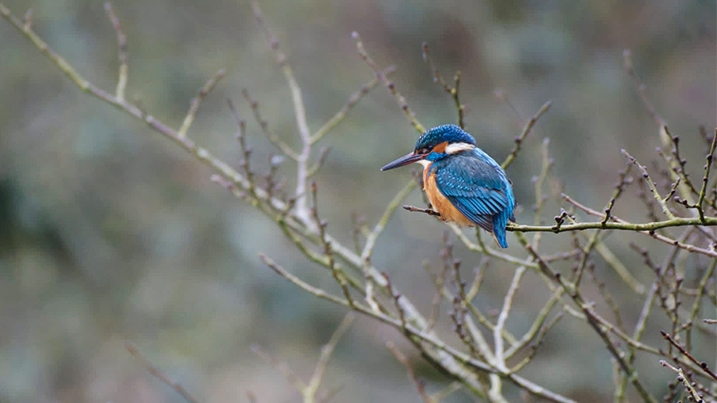
When it spots a fish, it can dive headfirst at speeds of up to 25 mph. As it plunges into the water, it folds its wings tight against its body. It’s worth noting that despite having a dagger- shaped bill, kingfishers don’t spear their prey. Instead, they grab hold of it between their upper and lower mandibles. Their super sharp pointed beak also means they can slice soundlessly through the water, meaning kingfishers can dive into pools without alerting fish.
And while we’re talking about their beak. Did you know, the easiest way to tell the sexes apart, is by the lower bill of a female’s beak which is orange? Just as if she’s applied a streak of lipstick.
4. Keep your eyes on the water
Kingfishers are like bolts of lightning as they zoom across the water’s surface. Keep a sharp lookout for flashes of brilliant turquoise blue as they dart about.
5. Use all your senses
Don’t forget to listen. Kingfishers have a distinctive high pitched, short whistle. They use this to communicate with each other and stake their claim on their territory.
If you can learn to recognise their call, it’ll help lead you to nearby kingfisher hotspots, even if the birds themselves are hidden from view.
6. Learn their habits
Kingfishers are territorial birds and creatures of habit. Typically, they stick to a particular stretch of water where they like to hunt and nest. Once you’ve found a kingfisher’s favourite spot, you can visit regularly and learn their routines.
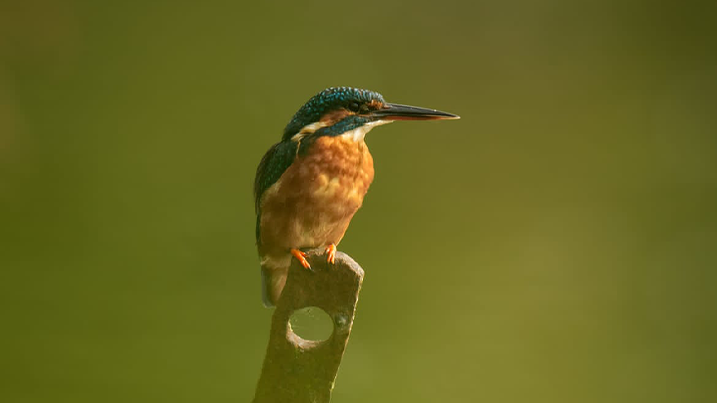
7. The early bird catches the …….
Kingfishers are particularly active in the early morning. They need to eat regularly and wake hungry. They’re up bright and early in search of food . So, get ready to set your alarm.
8. What time of year?
You’re most likely to see kingfishers during and after the breeding season between April and August. This is because they’re out and about more as they’ve got extra mouths to feed. A pair of kingfishers may have to catch at least 100 small fish a day to feed their young.
But winter is also a good time to spot them, as there’s less greenery around to hide them from view.
9. Keep it quiet
Kingfishers are notoriously shy birds. They can be easily startled. So, stay still and quiet to maximise your chances of seeing one.
10. Visit a WWT wetland centre
Many of our sites have regular kingfisher sightings.
At WWT Slimbridge two kingfishers made the national news recently. Usually kingfishers start nesting in March, but this pair was spotted digging a hole for their eggs in early February. The early breeding has raised hopes that three clutches of eggs could be produced. In total there are five pairs breeding at Slimbridge. They’re very active and can often be heard or seen zooming down ditches, making their loud call.
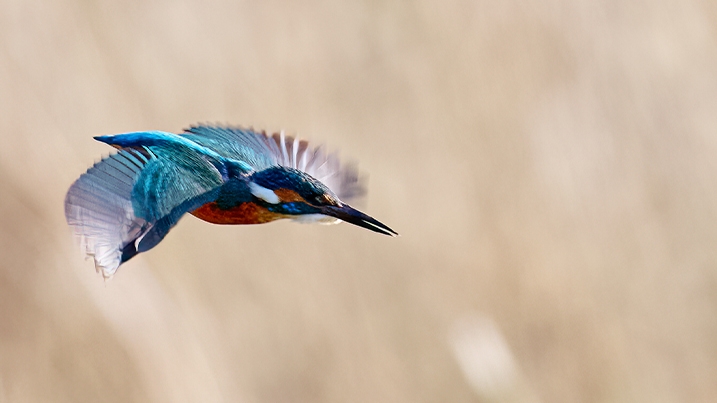
Many visitors to WWT Washington enjoy fantastic views of kingfishers across our wetlands, where they’re also known to breed. They’re often spotted perching on posts by our Lagoon View Hide before diving to catch fish, as well as the gully area. And thanks to habitat improvements there’s also been an increase in kingfisher sightings from our Northumbrian Water Hide.
At WWT Arundel we’ve had kingfishers breeding on site since 2020. We’ve built two artificial nesting banks that replicate the steep sided riverbanks where kingfishers nest. It’s a habitat that’s fast disappearing in the wild. We currently have a pair checking out the nest holes and we’re hopeful they’ll soon be laying eggs.
They generally rear two broods each year, so will be particularly visible throughout the spring and summer months, especially from the Discovery Hide that looks out over the artificial nesting bank.
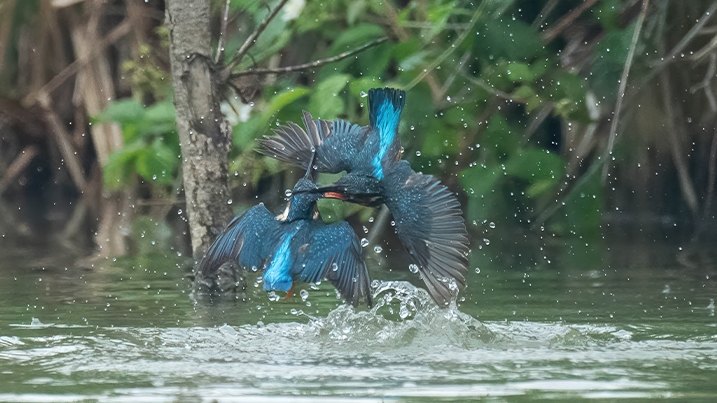
WWT Martin Mere currently has two pairs of kingfishers nesting. The best place to see them is the Ron Barker hide. You can watch them as they perch above the pool to the left of the hide, waiting for fish to emerge amongst the water lilies.
WWT Castle Espie also has kingfishers on site, as captured by one of our photography volunteers. Although they don’t breed on the reserve, they’re usually very active throughout the winter months. They can often be found on one of the perches we’ve placed at various points across the site.
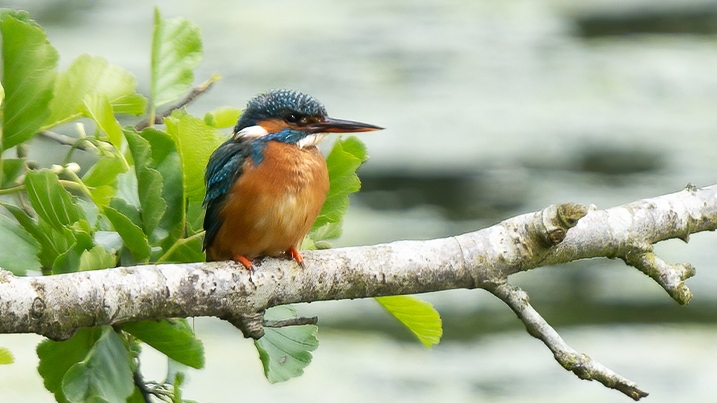
At WWT London we see kingfishers throughout the winter. And now the breeding season is upon us, we’ll be getting birds visiting us that are breeding locally in the Barnes area. Most of our sightings come from the sheltered lagoon where we have an artificial bank.
On arrival at any of our wetlands, feel free to ask if any kingfishers have been seen that day. When you’re visiting chat to other visitors too. Chances are our regular members will have seen a kingfisher and be happy to share their knowledge with you.
Another good idea is to check our latest sightings pages. You can also keep a look out on our sites’ social media feeds too, as visitors often post details of kingfisher sightings.
If at first you don’t succeed……
And remember, even if your first attempt to see this elusive bird isn’t successful, you never leave empty handed from a visit to a wetland.
While you sit patiently waiting for your kingfisher, you’ll be able to enjoy the wonderful surroundings and spend time unwinding in nature. You’ll discover there’s something so mesmerising and relaxing about just sitting quietly beside a river or a stream and watching it flow by.
And who knows what other wildlife you might spot that you weren’t expecting. Maybe a swan serenely gliding by? The splash of an otter or the plop of a water vole? What’s not to love about that? And there’s always next time.
If you’ve been inspired to explore one of our wetland centres and look for a kingfisher yourself, find out more and plan your visit online.
Plan your visit


